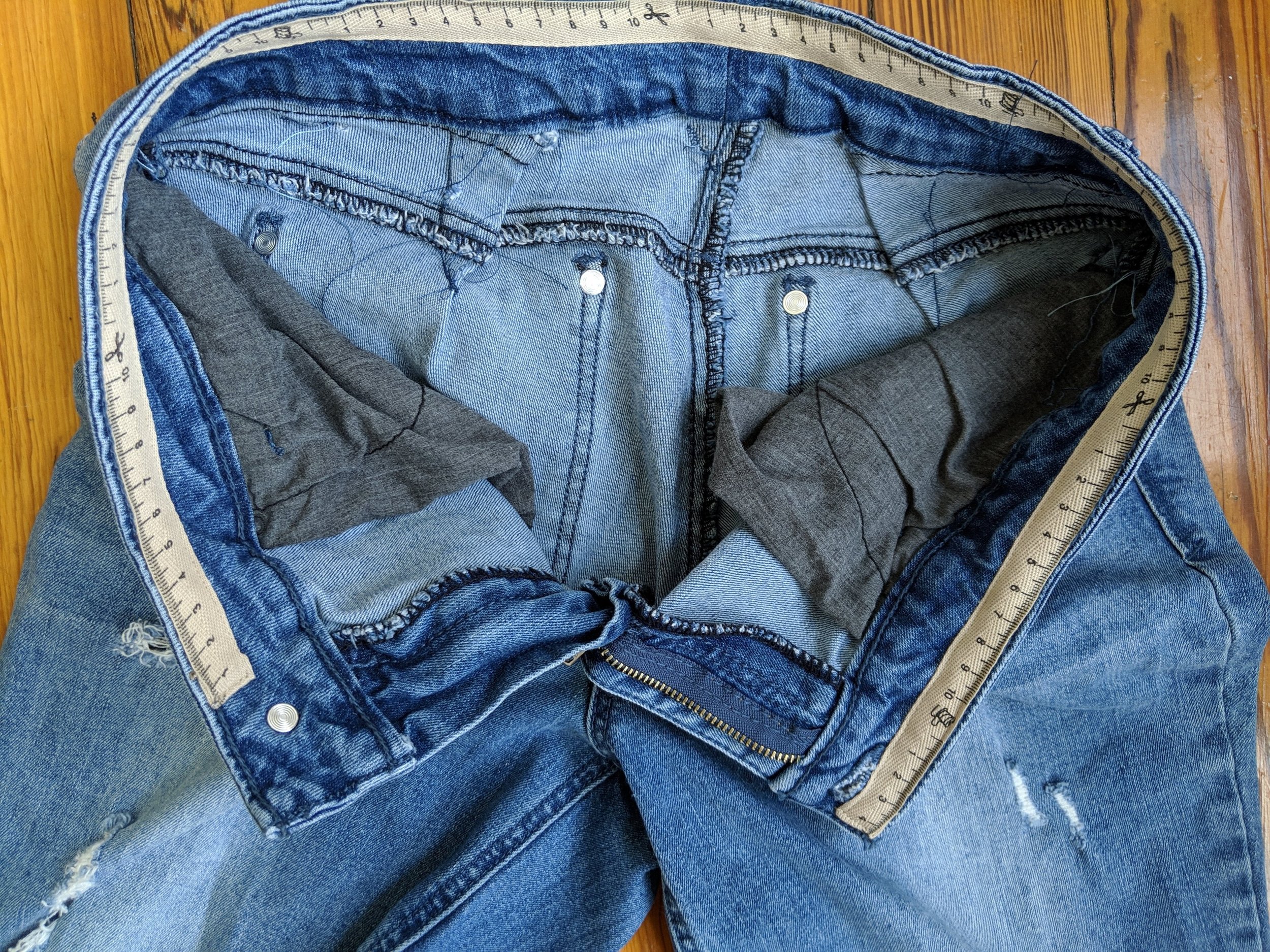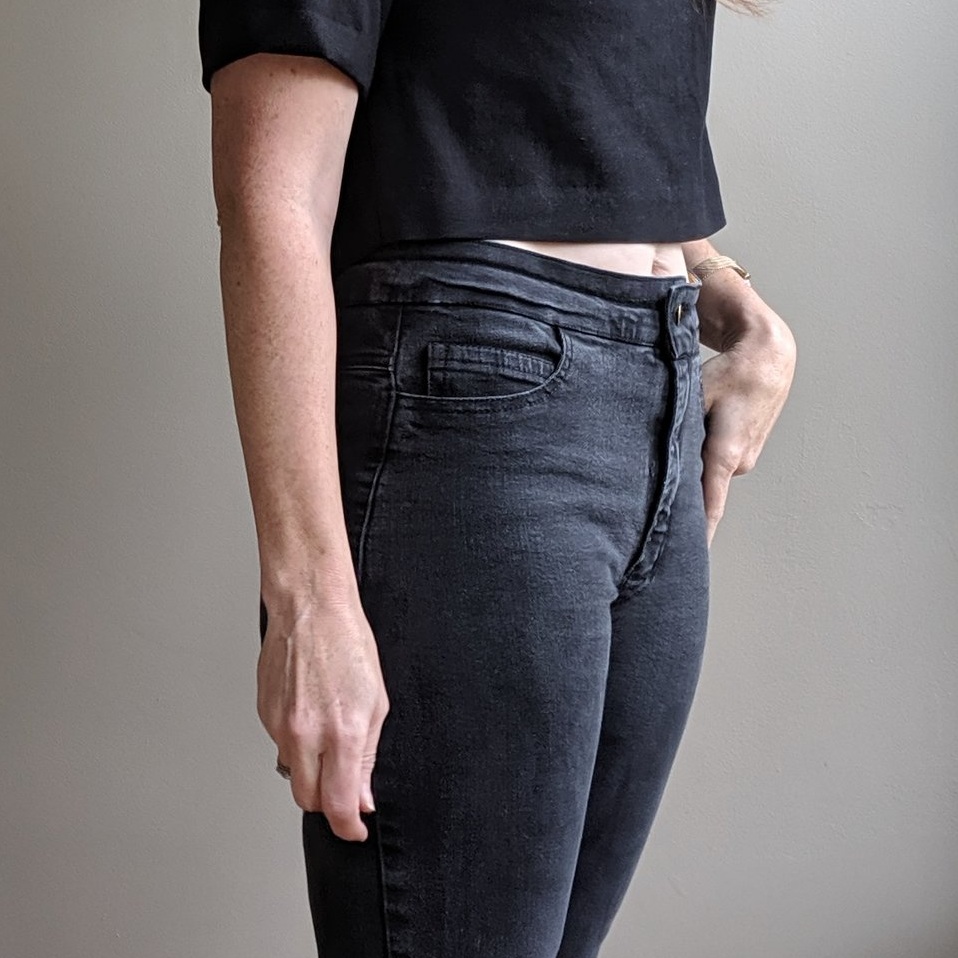I’m still on a bit of high from solving all my waistband problems. It’s a super simple fix really and because it doesn’t even involve a seam ripper, I think it’s fair to call it magic, apply for a patent, and start raking in the royalties. (That’s how that works, right?)
I’m talking about stretch jeans. They fit perfectly fresh out of the wash. But then they grow. They need to be constantly tugged back up. And they have to be washed again because they are a sad droopy mess by the end of the first day’s wear
The idea for my fix came from the construction of Liana Stretch Jeans. I think I sewed 3 pairs for #sewfancypants in January! (Blog posts- here and here.)
There’s no interfacing whatsoever in the waistband on Lianas. Instead, narrow twill tape is basted into the upper seam allowance. I was skeptical at first, but I like to try new construction methods and give them a fair shot.
So 3 pairs, several wears down the road I can tell you this stabilizing method holds up incredibly well. And it’s the impetus for my fix for already constructed (ie rtw) jeans.
There’s no need to open the waistband for my fix, though! Simply sew some twill tape to the waistband facing.
The first pair I experimented with this approach on was a pair of rtw jeans I had altered the year before, adding waist darts in the back and removing some width from the waistband. This certainly helped this pair a lot, but I found them to be too big again this year, mostly because they stretch out through the day. Since I never wear belts I didn’t even bother to take the belt loops off before sewing the twill tape in.
The bobbin thread matched my denim so well I don’t even think you can see the line of stitching that runs over the belt loops.
I went after my high-waist Ginger jeans next.
This was the first and last time I used a cute quilting cotton for the waistband facing. Even with interfacing, it’s just not as stable as denim. I had already moved the button on this pair in an inch several months back.
I never added belt loops to these black Gingers, so there were none to worry in this case.
I simply try to ease as much of the jeans waistband under the twill as I go. Think if it as the opposite of stretching elastic while sewing it. (Alternatively, you could use a length of twill tape that sits comfortably at the level where you want your jeans to live. Mark the quarters on your tape and jeans and ease them together.)
Can you see the line of wear across the middle of the waistband on these? The band used to always flop over. Not anymore!
One last example coming at you. I even freed the belt loops from their top stitching on this pair. initially, I used some ricrac. But I had worn these for several hours first and they were too relaxed already. I had to rip out the ricrac, wash and dry them and go at it again. I definitely recommend stabilizing the waistband on a fresh washed pair when they fit the best and haven’t stretched with wear.
I went back to the twill tape. And because this pair was particularly prone to growing and I found I hadn’t quiet eased them in enough, I added an extra length in the back from side seam to side seam.
I also moved the button in 3/4”. I’m not sure if you can appreciate from the before and after pictures, but I was able to slip these straight off without undoing the button and zipper at all before and now they stay put on my hips. (Yeah. They got cut-off too. It’s hot. #aintnobodygottimetosewnewshorts)
I’m really glad I tried the Liana stretch jeans pattern and that this stabilizing trick translated well to other applications. I’ll be using twill tape in the upper seam allowance of all my waistbands going forward and adding it at will for those pairs (both self sewn and rtw) that tend to grow too much.
And may all your jeans stay put now too!
Post edited February 3, 2020 to add affiliate links for Itch to Stitch.











